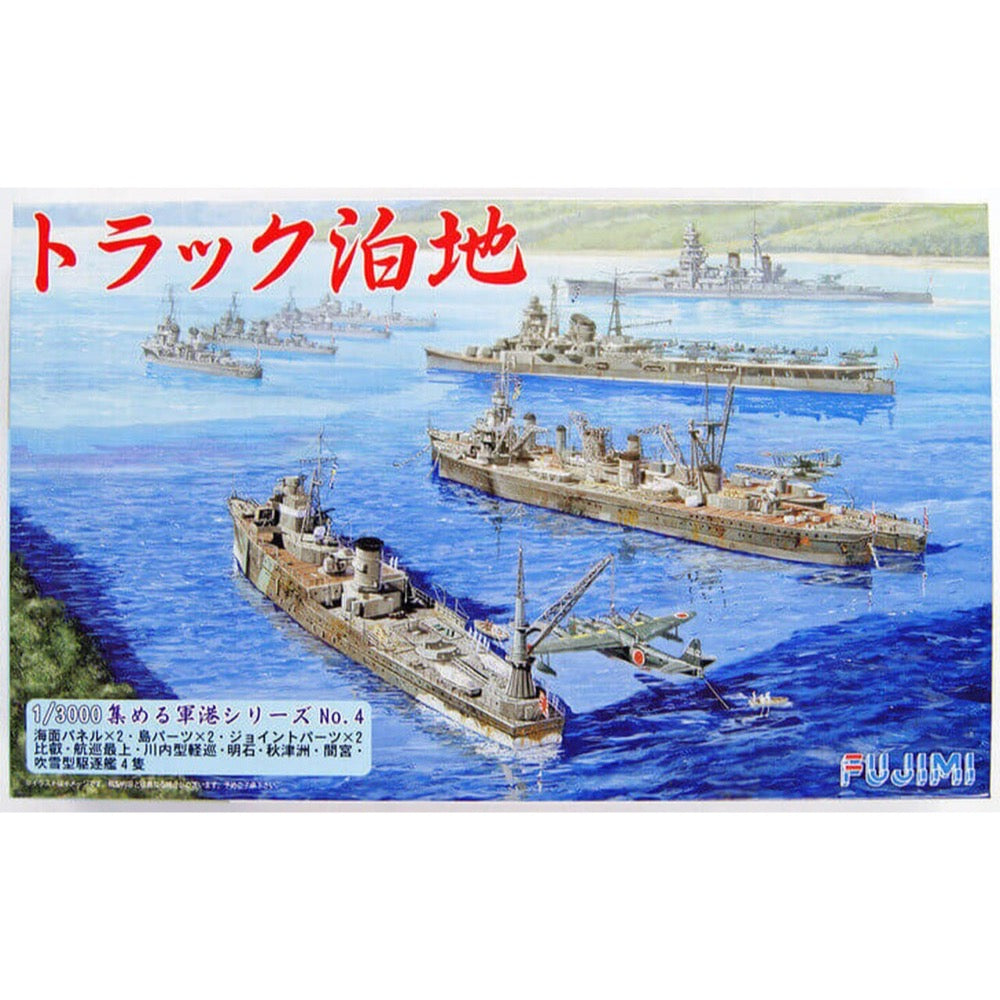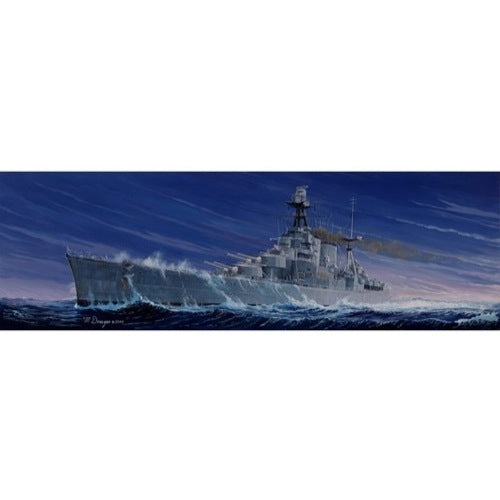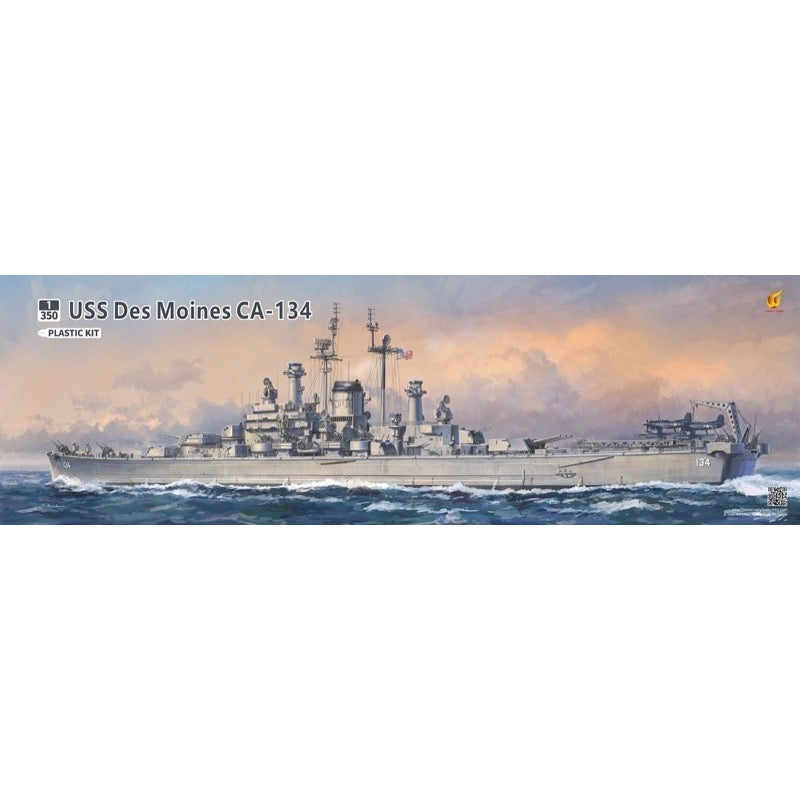
Very Fire VF350918 1/350 USS Des Moines
The USS Des Moines was the first battleship to carry an automatic loading device, which allowed its main gun to fire up to 10 shots per minute. She was laid down in 1945 and entered service in 1948, serving until 1961. This full-hull injection kit includes photo-etched parts and decals, combining delicate details with a large scale to result in a magnificent ship you'll be proud to build and own
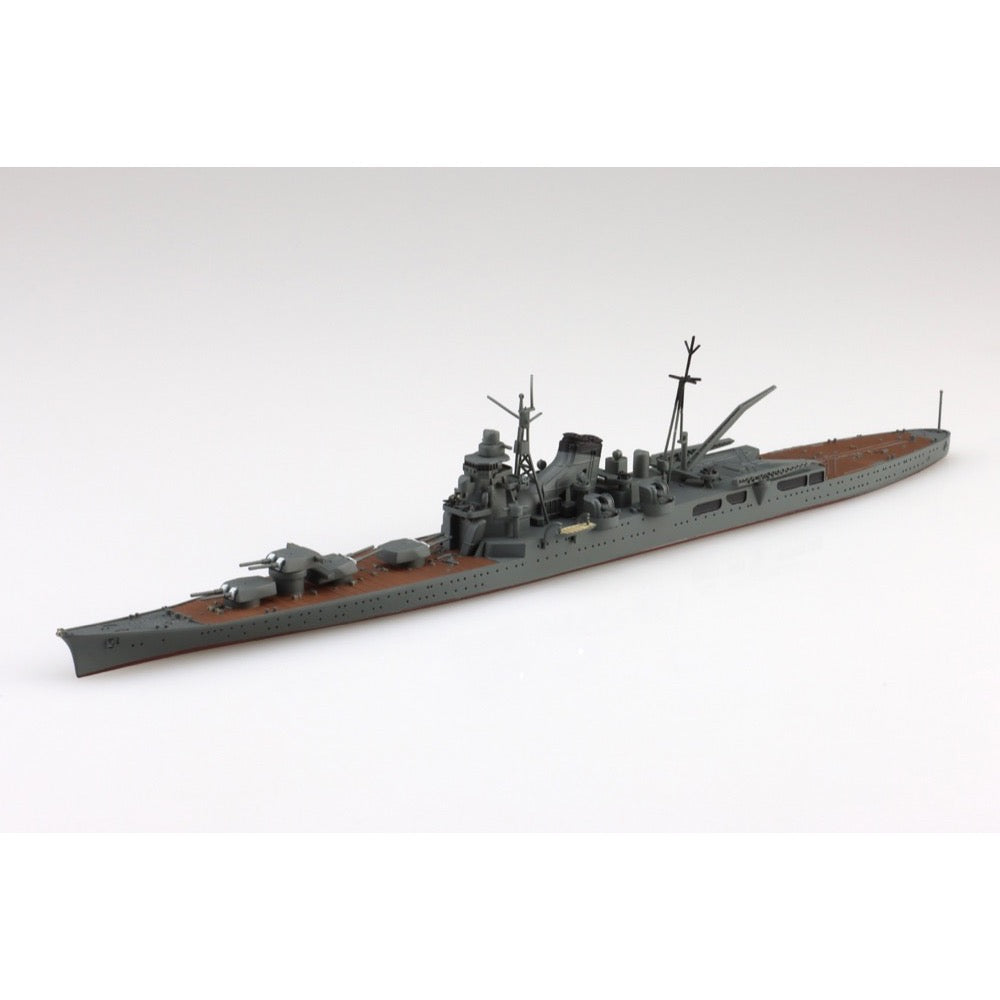
Aoshima A006967 1/700 Japanese Navy Heavy Cruiser Chikuma
This is a plastic model kit, which comes unassembled and unpainted. So glue, model paints and other basic modelling tools are additionally required.
Chikuma was the second and last vessel in the Tone class of heavy cruisers in the Imperial Japanese Navy. The ship was named after the Chikuma River in Nagano Prefecture.
Specification
- Number: A006967
- Scale: 1/700
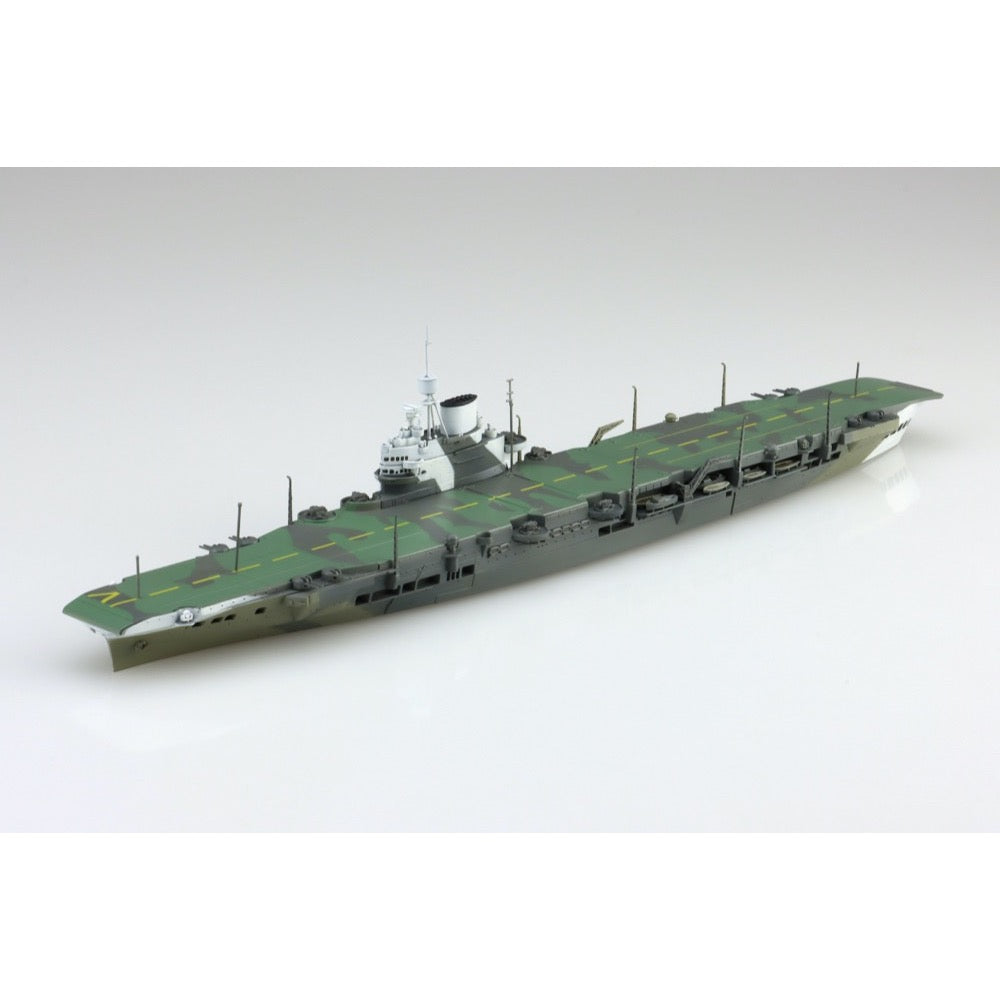
Aoshima A006962 British Aircraft Carrier Victorious
Victorious is the second Illustrious-class aircraft carrier, which opted for heavy armor rather than aircraft capacity.
When it was completed, it belonged to the Home Fleet, and subsequently fought in battles in the Mediterranean and Pacific Oceans, and is now available as a 1/700 scale plastic model kit. With a parts configuration focused on the essentials, it is simple, easy to assemble, and can be accurately reproduced.
Features
- British aircraft of the same scale included.

Trumpeter 06630 1/200 WW2 Signal Flags
International maritime signal flags is a set of specific signal flags used for visual communication between ships and vessels in the seas and oceans. These flags are used to broadcast the so-called International Code of Signals (MKS for short), which was approved in its current form in 1969. Most signals are 1 to 3 letters long, with each flag assigned a Latin letter. Moreover, each letter has been assigned a specific meaning. For example: a flag composed of two yellow stripes and one blue stripes is the letter D (Delta), which is assigned the meaning "Stay away - I am maneuvering with difficulty". On the other hand, the flag with two black and two yellow squares is the letter L (Lima) and means "Stop your ship!". However, the MCS also enables letter-by-letter communication, where the flags are assigned only a letter meaning, with no additional meanings.
73 flags.
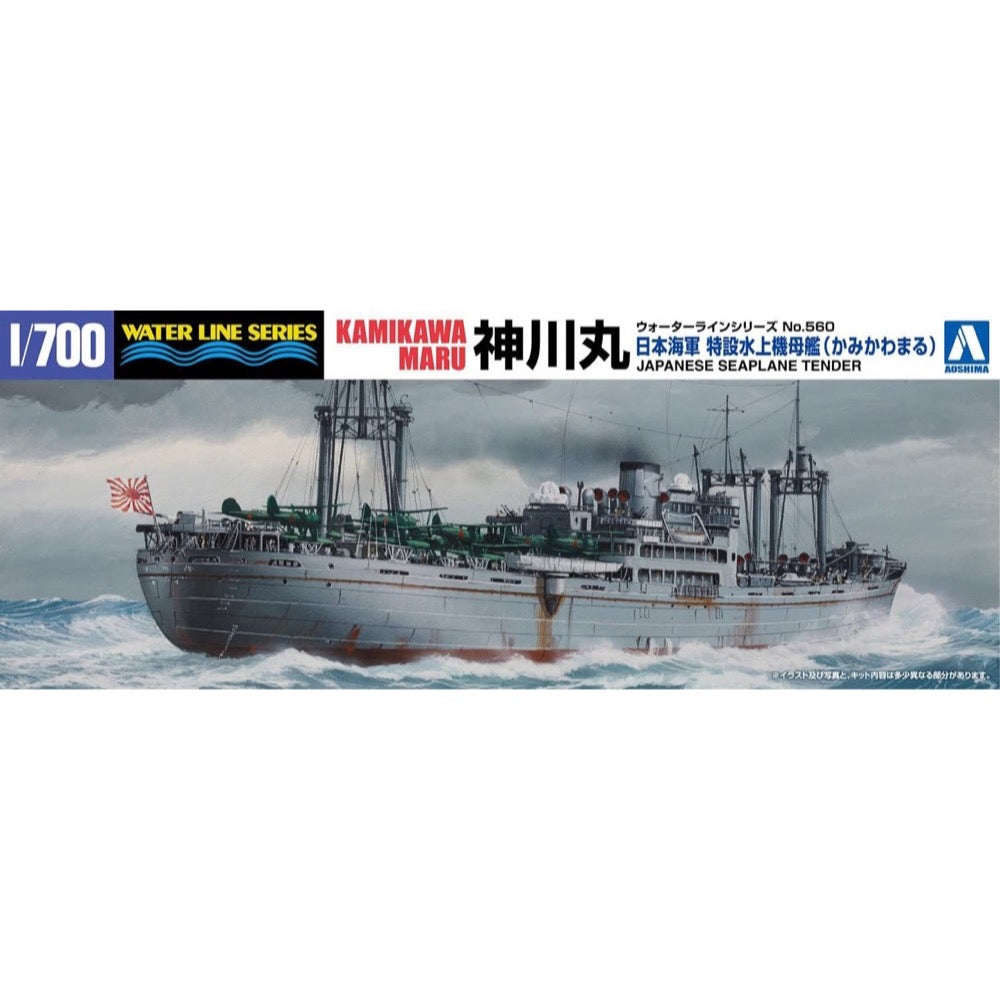
Aoshima A000974 1/700 Japanese Seaplane Tender Kamikawa-Maru
Get ready to recreate the historic battles of World War II with this highly detailed model of the Kamikawa Maru, a seaplane tender in the Imperial Japanese Navy. Originally a merchant vessel, this ship was requisitioned by the IJN in 1937 and refitted as an aircraft transport ship.
Step back in time and experience the Second Sino-Japanese War and the Pacific Campaign with this authentic replica. The Kamikawa Maru met its fate at the hands of the USS Scamp on May 29, 1943, adding a dramatic touch to your collection!
Parts come molded in gray for easy assembly and painting.
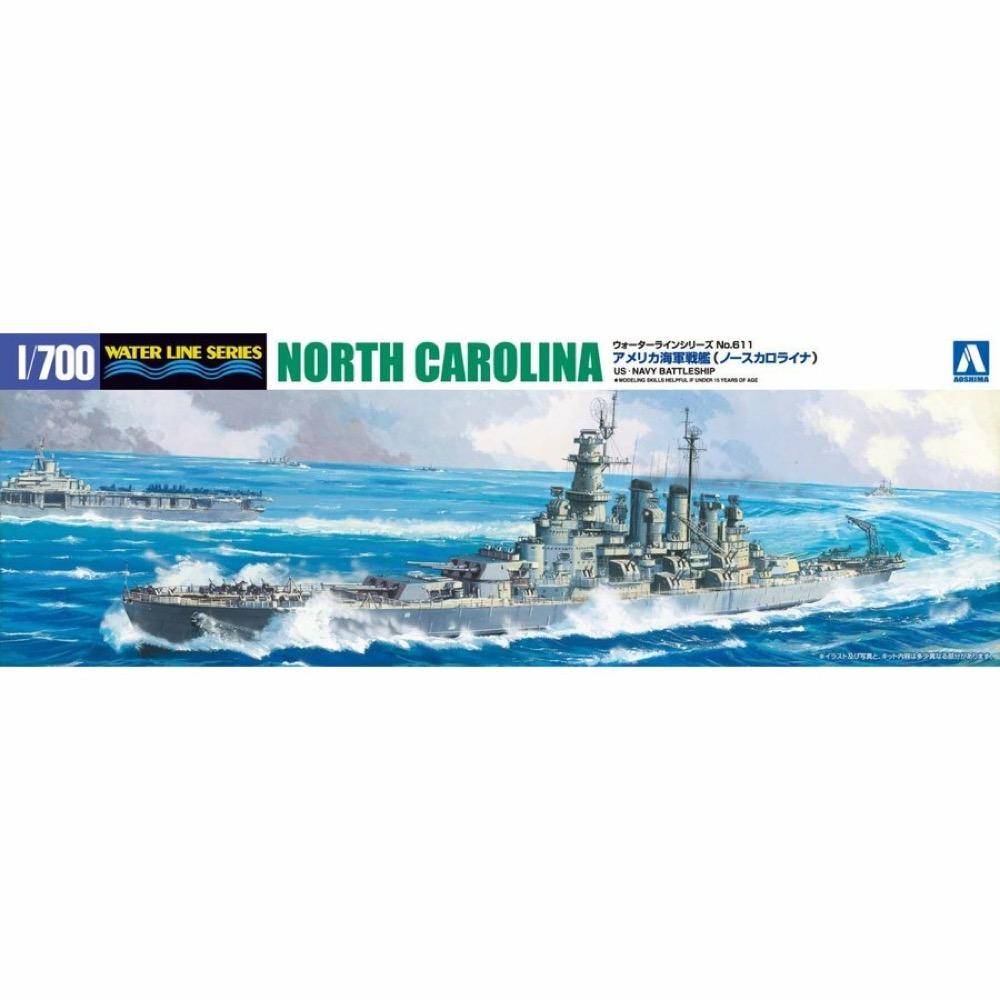
Aoshima A004600 1/700 US Navy Battleship North Carolina
USS North Carolina (BB-55) was an American battleship laid down in 1937, launched in June 1940, and commissioned in the US Navy in 1941. The ship was 222 m long, 33 m wide, and her full displacement - at the time of launching - 44,400 tons. The maximum speed of the USS North Carolina battleship was up to 26 knots. The main armament was 9 406 mm guns in three turrets of three guns each, and the secondary armament was mainly 20 127 mm guns.
USS North Carolina was the first of two battleships of the type to bear the same name. This type of ships was one of the first modern US Navy ships of the World War II period. During their construction, no tractor restrictions were applied, which resulted in a significant increase in displacement to the so-called standard battleships and the ability to mount powerful main and secondary weapons located in separate towers, not casemates. The new battleships also have improved performance over battleships such as Colorado and Pennsylvania. USS North Carolina (BB-55) underwent its baptism of fire in World War II in the Pacific from participating in the fighting in the Gudalcanal area in the second half of 1942, taking part in the Battle of the Eastern Solomon Islands, among others. In September 1942, the ship was damaged as a result of an attack by the I-19 submarine. After the repairs of the USS North Carolina, however, she quickly returned to the line. In November 1943, the ship supported operations in the Tarawa region. A year later, the ship supported the landing on Saipan and took part in the Battle of the Philippine Sea. In 1945, the ship supported operations in Okinawa. USS North Carolina (BB-55) was decommissioned in 1947 and has been serving as a museum ship in Wilmington, North Carolina since 1962.
Waterline Series.
This is an injection-plastic ship model kit.
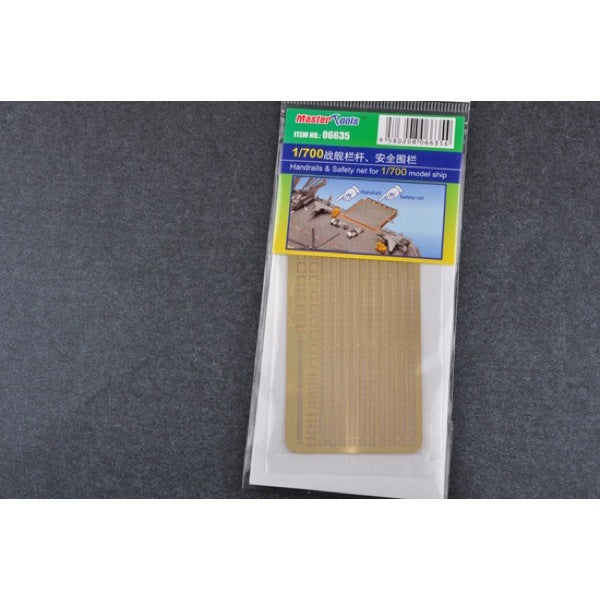
Trumpeter 06635 Handrails & Safety Net for 1/350 Model Ship*
High quality metal model accessory, designed to enhance an existing model to a specified standard. Paint and glue not included. Requires assembly and painting. For intermediate to advanced skill modellers.
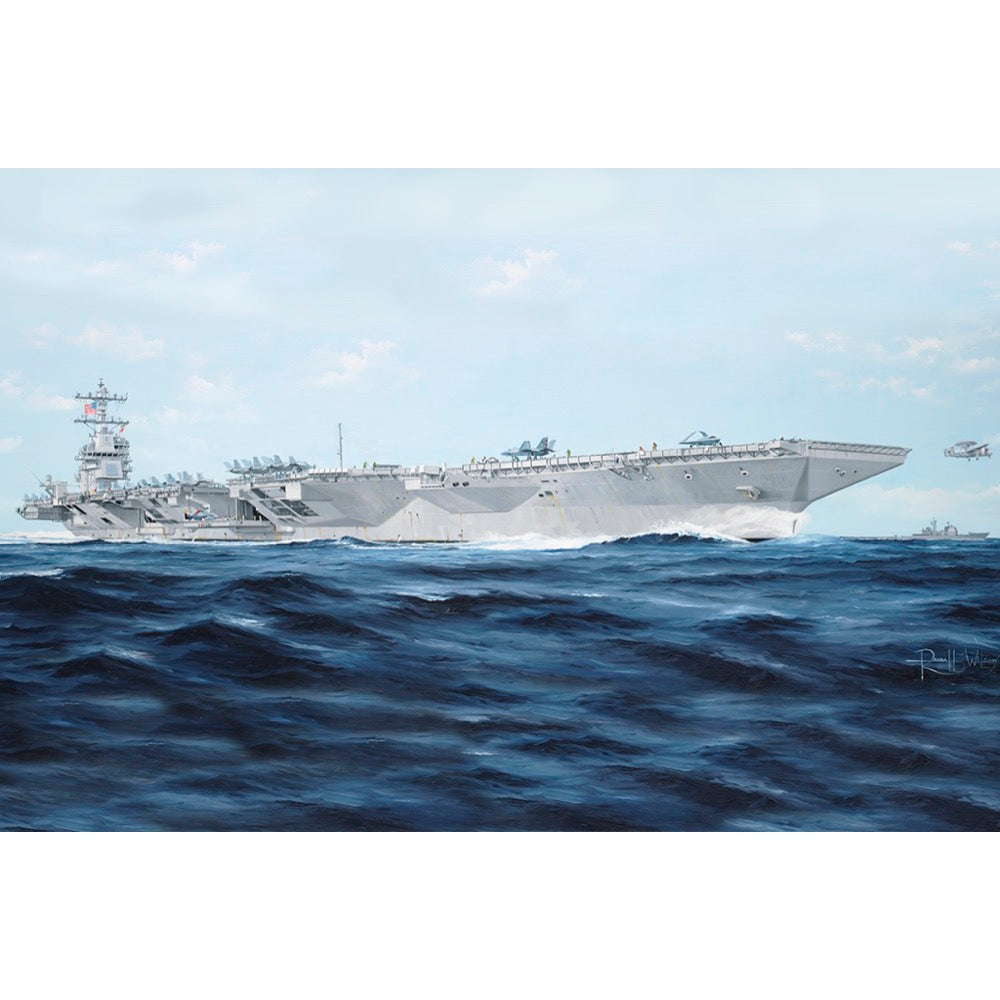
Trumpeter 05638 1/350 USS Gerald R.Ford CVN-78
USS Gerald R. Ford aircraft carrier is Gerald R. Ford class aircraft carriers first ship, started construction on August 11, 2005, was officially launched on November 9, 2013, and entered service on July 22, 2017. It is the largest aircraft carrier in the United States and even the world. This class of aircraft carrier is planned to build 10 by 2058, making it the first aircraft carrier in the US Navy to use electromagnetic catapult systems, replacing the Nimitz class as the new backbone of the US Navy fleet.
The Ford aircraft carrier is equipped with two sets of RIM-162 ESSM missiles, two sets of RIM-116 RAM missiles, two sets of dense array close range defense weapon systems, and the MK-38 25mm remote-controlled machine gun system.
The carrier based aircraft models carried on the Ford are F-35C fighter jets, F-18E/F fighter jets, E-2C/D airborne early warning aircraft, SH-3G/H or SH-60F helicopters, and the plan is to carry the MQ-25 unmanned refueling aircraft.
Features
- Detailed Hull is a one piece part
- Detailed decks
- Extensive photo-etched details included
Aircraft Wing includes
- F-35C, EA-18G, MH-60S, MV-22, F-18F, E-2C
- Complete ship and aircraft decal sets

Trumpeter 06746 1/700 Russian Destroyer Taszkient 1940
Tashkent was a Soviet destroyer from the Second World War. The keel for this unit was laid in January 1937, the launch took place in December of the same year, and the entry into service - in May 1939. The length of the ship was 139.7 meters and a width of 13.7 meters. Full displacement reached about 4,200 tons, and maximum speed - to about 42-43 knots. The deck armament, at the time of the launch, consisted of, among other things: 6 130 mm guns, 2 76 mm anti-aircraft guns and 9 533 mm torpedo tubes.
Tashkent was one of the 20I project ships built, which was designed as the so-called great destroyers. Strong artillery armament of these units was assumed, and they would achieve a high maximum speed. Their main purpose was to fight the enemy's light surface units, but also to act independently, such as building mine barriers. Tashkent was built at the Italian shipyard Odero-Terni-Orlando (OTO) in Livorno. After entering service, the unit became part of the Black Sea Fleet. In the period 1939-1941, the ship was tested by the Soviets, as well as its crew in training and assigned to representative tasks. At the outbreak of the German-Soviet war, the ship was in the Black Sea basin. The unit was used, among others, to fire at enemy positions on land, and above all, to support the defenders of Sevastopol in the period 1941-1942. In June 1942, as the last large surface ship, it broke through to the besieged fortress, and then about 2,300 refugees escaped from it. Despite air attacks and serious damage, it reached the base in Novorossiysk. The unit was sunk shortly after this heroic feat, on July 2, 1942.
Specifications
-
110 parts and photo-etched parts.
-
Length built 199.6mm / width 19.6mm.


